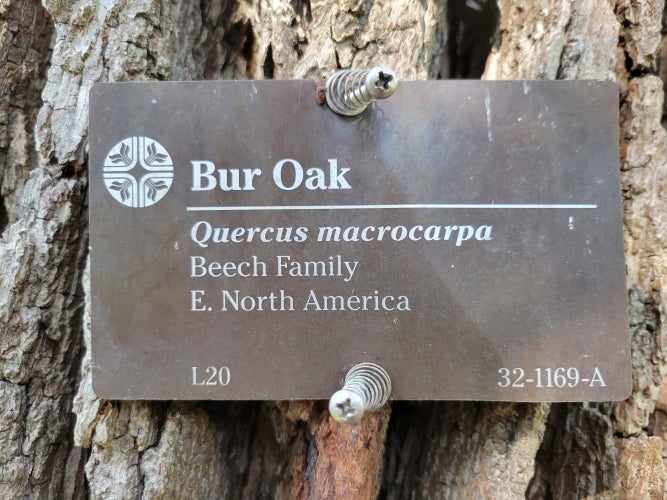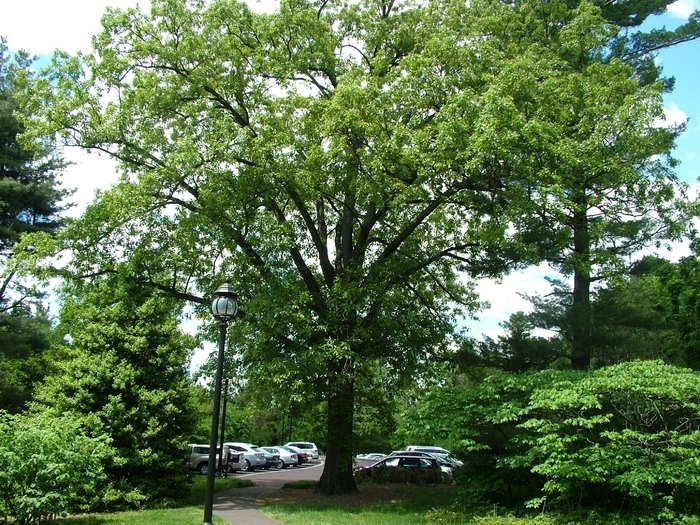Blog


The pale green color of the tree’s thinning crown contrasted against the tan circles of fresh deadwood pruning cuts. A sort of foul, fermented smell permeated the air around the trunk as the tree continued to ooze sap, attracting an interesting variety of insects. The signs of decline were, unfortunately, abundant.

The iconic Morris Arboretum bur oak (Quercus macrocarpa) that stood atop the Holly Slope for 100 years had to be removed in 2022 as it declined from a nasty fungus. The tree was planted September 9, 1926, by the National Association of Gardeners in commemoration of their visit to Compton, the estate owned by siblings John and Lydia Morris. It was part of the original accession when the estate became Morris Arboretum in 1933.
On the back of the tree, a large necrotic area exposed the tree’s heartwood. Upon closer inspection, a harmful wood-decay fungus called Armillaria had spread its rhizomorphs throughout. Armillaria is a native plant pathogen that typically infects woody plants and causes basal rot or root rot. A very healthy and vigorous plant can usually resist infection, but stressed or damaged plants are more susceptible. There is no known cure once a tree becomes infected.
Because of the tree’s location near a walking path and parking lot, fallen branches or full tree failure could spell catastrophe. The Morris Arboretum & Gardens arborist and urban forestry teams investigated the tree’s health further. First, a rubber mallet was used to strike the trunk of the tree repeatedly, while listening for hollow points around its circumference. The decayed sections of wood reverberated with sounds reminiscent of a bass drum—a concerning sign of lost structural integrity.

A resistance drill was then applied to investigate the extent of internal decay around those areas. The instrument measures resistive forces by drilling a small needle through the trunk and toward the center of the tree. Strong, healthy wood resists the needle with a lot of force, while decayed wood provides minimal resistance. The results were interpreted and showed only a few inches of solid wood remaining in many areas—ultimately not enough to leave the tree standing, and a decision was made to remove it.
Removing the tree required a 100-foot crane, a skilled crew, and a full day of work. The tree’s largest limbs were carefully tied and cut by Chief Arborist Peter Fixler and lifted to the parking lot by crane, where the remaining crew cut and chipped them up. A Compton oak (Quercus × comptoniae), which is a natural hybrid between a live oak (Quercus virginiana) and an overcup oak (Quercus lyrata), was planted in the bur oak’s spot in February. While the Compton oak is not related to the Morris’s old estate (also called Compton), there is perhaps no better choice for a replacement tree!
See video of the tree removal here.
This article originally appeared in Seasons Spring/Summer 2023.